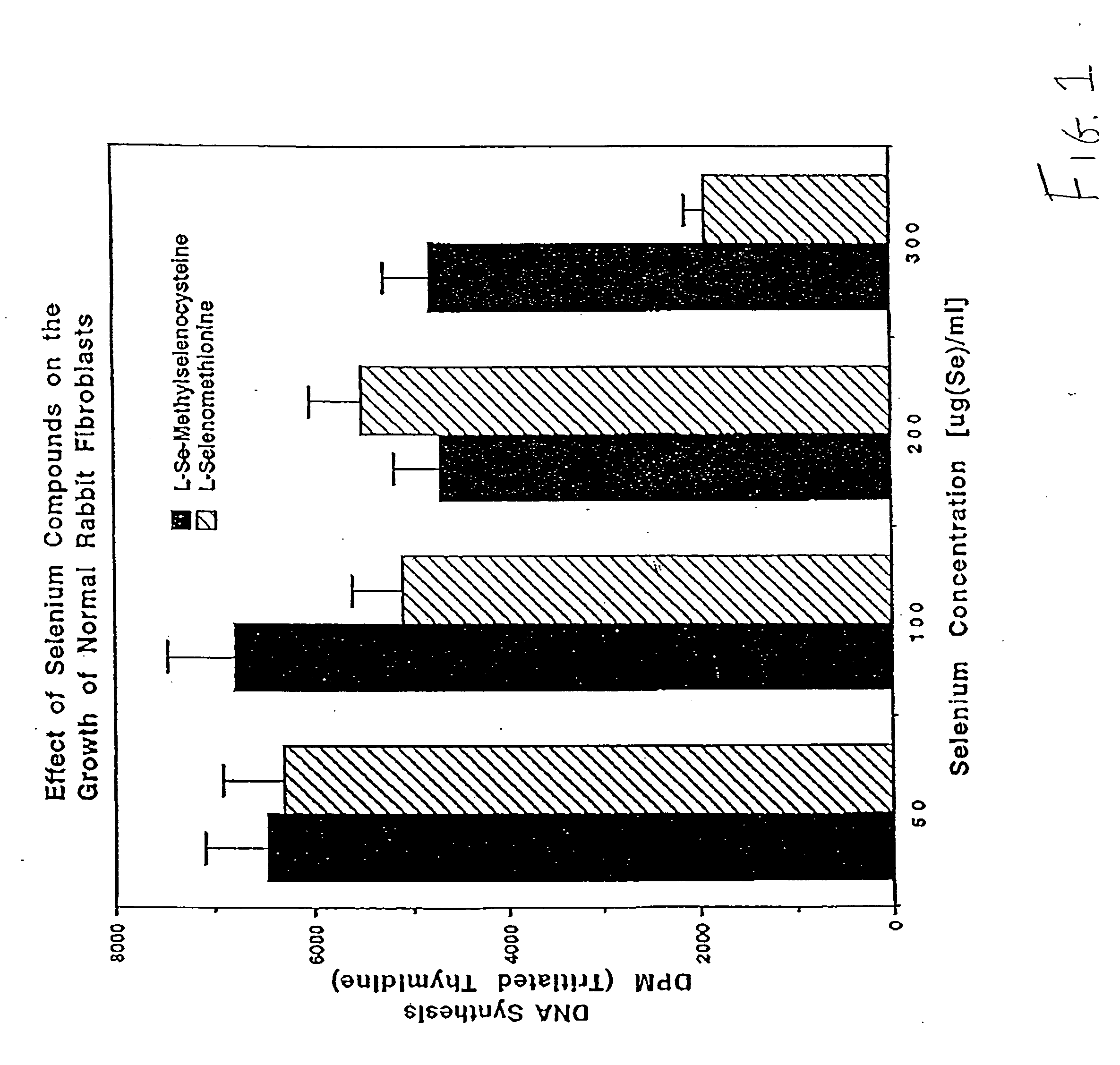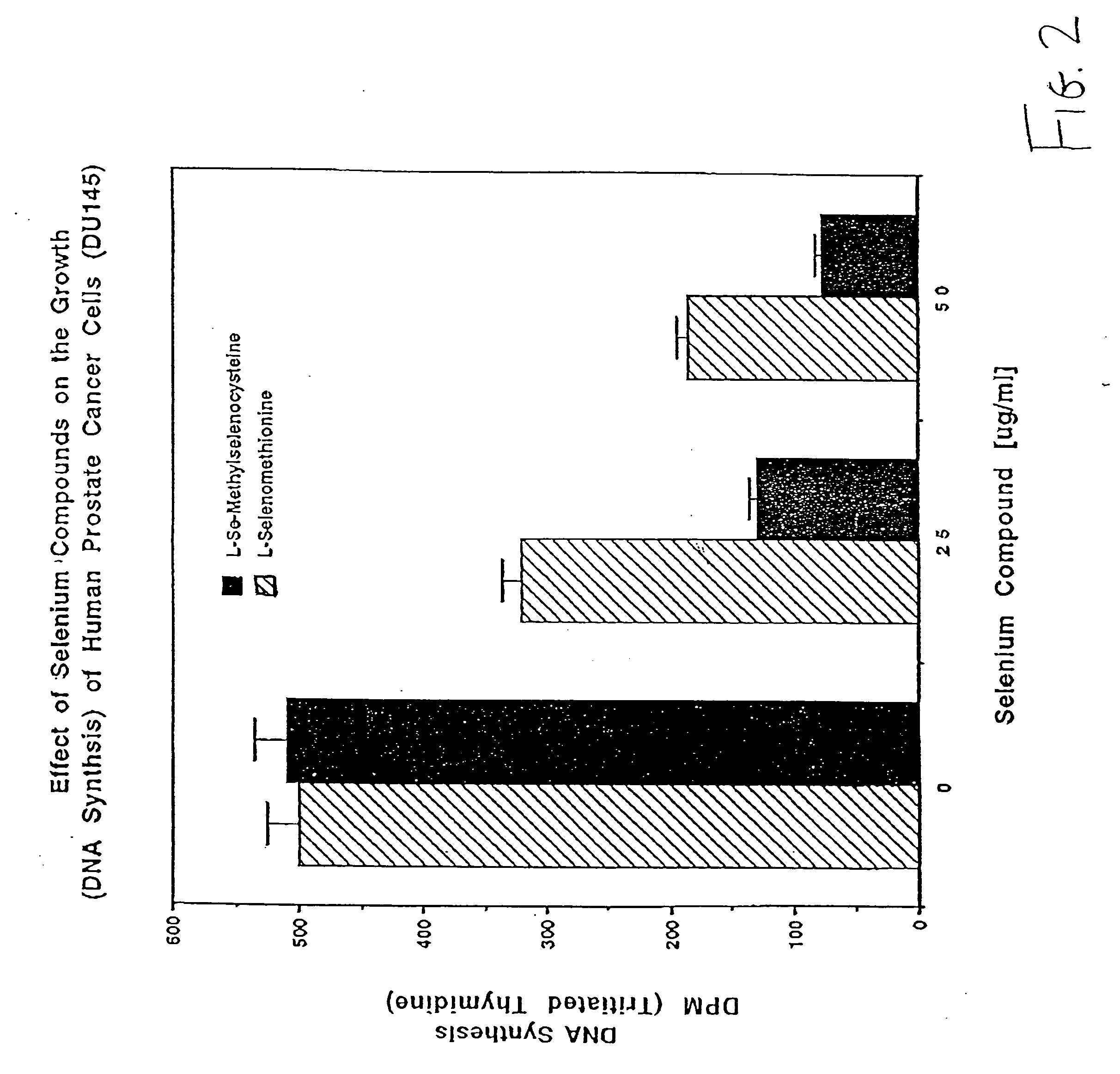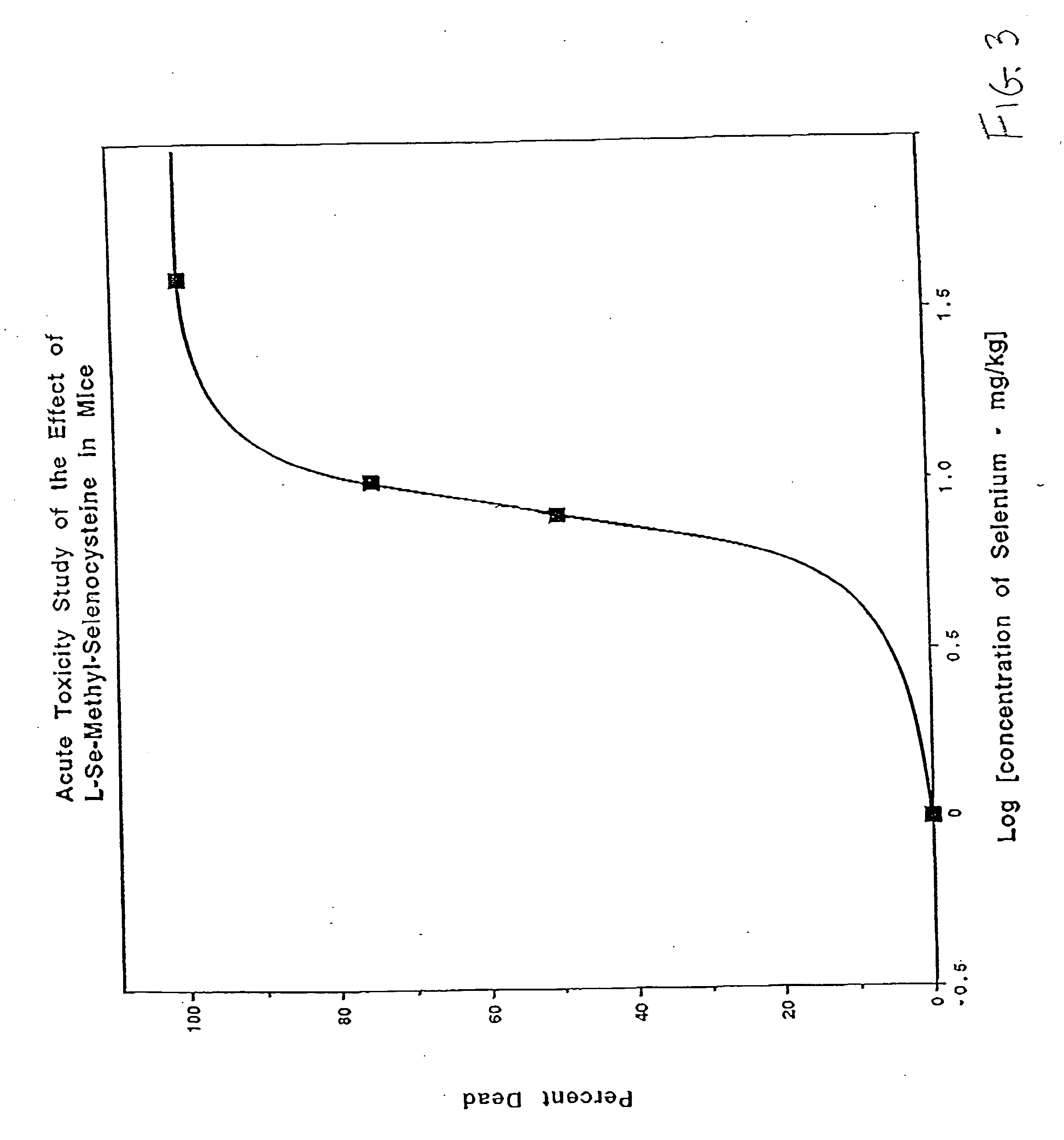Method of using synthetic L-Se-methylselenocysteine as a nutriceutical and a method of its synthesis
a technology of lse-methylselenocysteine and nutriceutical, which is applied in the field of using and forming synthetic lse-methylselenocysteine, can solve the problems of apoptosis (cell death), superoxide and hydrogen peroxid
- Summary
- Abstract
- Description
- Claims
- Application Information
AI Technical Summary
Benefits of technology
Problems solved by technology
Method used
Image
Examples
example 1
[0042] A. Preparation of N-(Boc)-L-serine β-lactone A
[0043] Triphenylphosphine (3.166 g, 12.1 mmole, freshly opened and dried under vacuum over phosphorus pentoxide) was stirred in 50 mL dry tetrahydrofuran (THF) under argon at −78° C., and 1.9 mL (12.1 mmole) of diethyl azodicarboxylate (freshly opened, but not distilled), in the form of an orange oil, was added drop wise, followed by THF rinses of the syringe. To the resulting clear yellow solution, a solution of 2.4 g (11.7 mmole) of N-Boc-L-serine (freshly opened and dried under vacuum over phosphorus pentoxide), in 50 mL dry THF, was added drop wise, followed by THF rinses of the addition funnel. The resulting pale yellow suspension of solid was stirred at −78° C. for 15 minutes, followed by removal of the cooling bath. The mixture, which turned clear and colorless as it warmed, was allowed to warm to room temperature and to stir for 1.5 hours. The mixture was concentrated by rotary evaporation and triturated with 85:15 hexane...
example 2
[0057] It is contemplated that the synthesis described in Example 1 may be simplified. Generally, serine β-lactone lacking the N-Boc group can be produced with the “free” amino group (i.e., without the N-Boc group), as a salt, and that this β-lactone will react with nucleophiles to produce, upon workup, the free amino acids directly from the β-lactone. The β-lactone, lacking the N-Boc group, can be generated from the N-Boc β-lactone for use in situ, or it can be isolated as a tosylate salt. Accordingly, it is believed that methyl selenol can react with the “unprotected”β-lactone, to produce L-Se-methyl selenocysteine via a more simplified synthesis. This reaction may be illustrated as:
[0058] The Boc group was retained during the previously illustrated synthesis to obtain easily isolable and identifiable non-water soluble, “organic” intermediates to confirm that the chemistry was proceeding as desired. Because it has been shown that the β-lactone can be formulated in this manner, a...
example 3
[0059] Example 3 illustrates the method of preventing or reducing the risk of developing cancer in mammals by administering an effective nutriceutical amount of synthetic L-Se-methylselenocysteine.
[0060] Materials and Methods
[0061] Methylseleninic acid (CH3SeOOH) was a dissolved in distilled water. Using a Rannin micropipette, aliquots were added directly to 1.0 ml of a buffered cocktail solution. The buffered cocktail solution was comprised of lucigenin (20 μg / ml), reduced glutathione (GSH) (4 mg / ml), and either sodium borate (0.05M) or sodium phosphate (0.05M), all purchased from Sigma Chemical Co. Two different buffered cocktail solutions were employed: the cocktail containing sodium borate was used for experiments at pH 9.2, which is optimum for the generation, detection and quenching of selenium catalyzed superoxide; and the cocktail containing sodium phosphate was used for experiments at pH 7.4, which is reflective of physiological conditions. One ml of the cocktail solution...
PUM
| Property | Measurement | Unit |
|---|---|---|
| body weight | aaaaa | aaaaa |
| body weight | aaaaa | aaaaa |
| pH | aaaaa | aaaaa |
Abstract
Description
Claims
Application Information
 Login to View More
Login to View More - R&D
- Intellectual Property
- Life Sciences
- Materials
- Tech Scout
- Unparalleled Data Quality
- Higher Quality Content
- 60% Fewer Hallucinations
Browse by: Latest US Patents, China's latest patents, Technical Efficacy Thesaurus, Application Domain, Technology Topic, Popular Technical Reports.
© 2025 PatSnap. All rights reserved.Legal|Privacy policy|Modern Slavery Act Transparency Statement|Sitemap|About US| Contact US: help@patsnap.com



